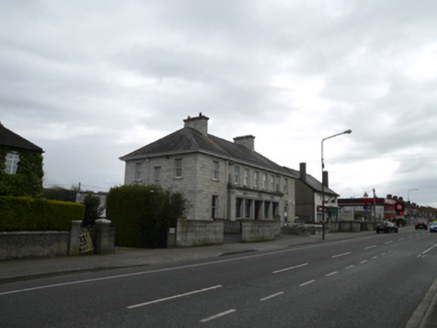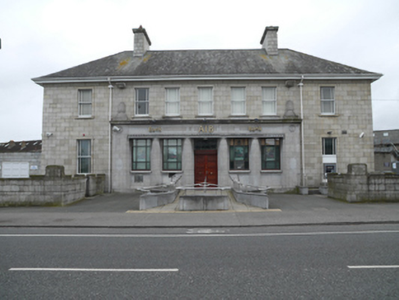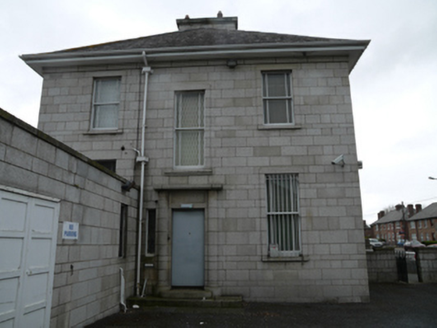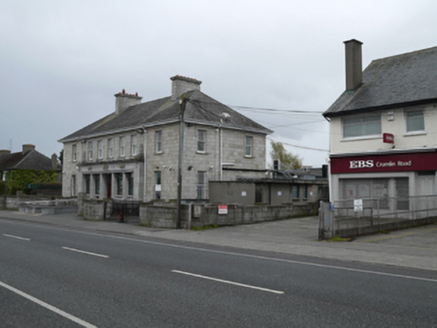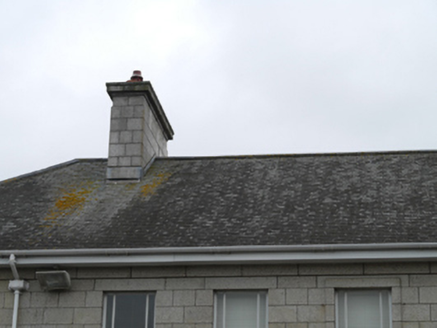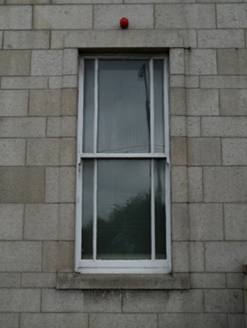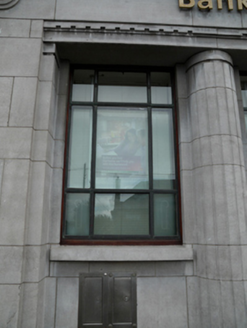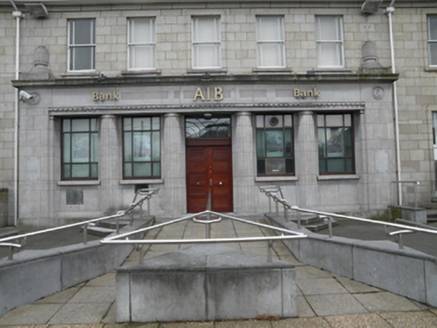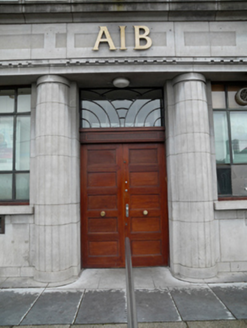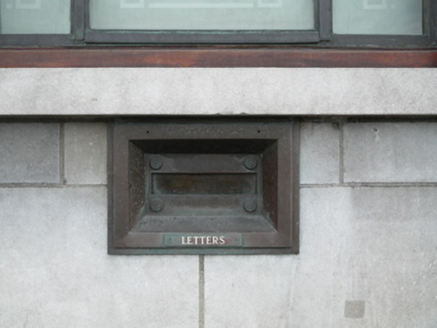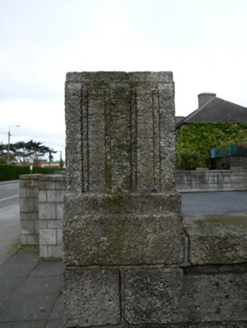Survey Data
Reg No
50080196
Rating
Regional
Categories of Special Interest
Architectural, Historical, Social
Previous Name
Munster and Leinster Bank
Original Use
Bank/financial institution
In Use As
Bank/financial institution
Date
1940 - 1950
Coordinates
312812, 232141
Date Recorded
28/04/2013
Date Updated
--/--/--
Description
Detached seven-bay two-storey bank, built c.1945, with central five-bay single-storey breakfront to front (north-west) elevation, and single-storey ancillary accommodation to rear (south-east) and side elevations. Hipped slate roof, cut granite chimneystacks having cornices, slightly sprocketed eaves, and cast-iron rainwater goods. Ashlar granite walls having cut granite eaves course. Lined cut limestone piers set on plinth course, supporting entablature with panelled frieze having roundels and dentils, with plain cornice over, topped with carved urns. Square-headed window openings with cut-stone sills, cut granite architraves to end bays and side elevations. One-over-one timber sash windows with margin sashes to ground and first floors, six-pane bronze fixed windows to breakfront. ATM to window opening to west end of front elevation. Square-headed door opening having double-leaf timber panelled doors and decorative bronze overlight above carved timber lintel. Flush bronze letterbox to breakfront. Set back from road with stepped granite boundary wall having cut stone coping, and symmetrical piers with art deco motif. Recent ramp to centre having limestone plinth and steel handrails.
Appraisal
An elegantly-composed bank forming an appealing focal point in the streetscape of Crumlin Road, built to designs by Beckett & Harrington. The design of the bank is grounded in long-established traditions with a symmetrical plan and classically-derived proportions, with the entrance cleverly alluding to a classical portico, without using any identifiable classical features. The construction in ashlar granite and limestone is typical of the solidity and traditional materials favoured by banks in the twentieth century. The bronze windows, overlight and letterbox are worthy of note. A well-maintained building, with most of the original external fabric surviving intact, the bank makes a positive impression on the character of the locality and remains in active use.
